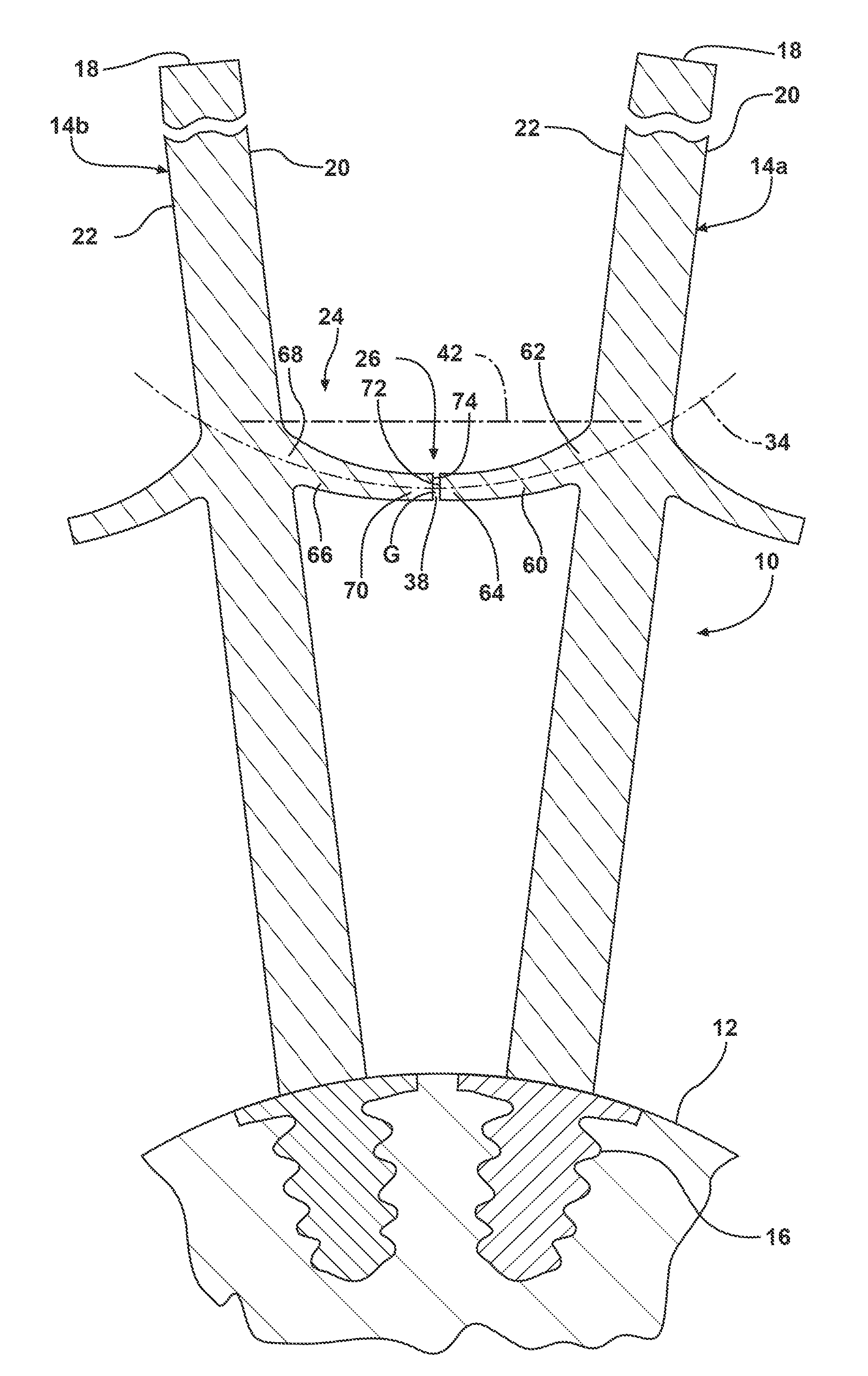Turbine Blade Damping Device with Controlled Loading
a technology of vibration damping and turbine blades, which is applied in the direction of liquid fuel engines, vessel construction, marine propulsion, etc., can solve the problems of snubbing surfaces, increasing the volume of flow through industrial turbine engines, and increasing the operating conditions (e.g., operating temperature and pressure)
- Summary
- Abstract
- Description
- Claims
- Application Information
AI Technical Summary
Benefits of technology
Problems solved by technology
Method used
Image
Examples
Embodiment Construction
[0018]In the following detailed description of the preferred embodiment, reference is made to the accompanying drawings that form a part hereof, and in which is shown by way of illustration, and not by way of limitation, a specific preferred embodiment in which the invention may be practiced. It is to be understood that other embodiments may be utilized and that changes may be made without departing from the spirit and scope of the present invention.
[0019]Referring to FIG. 1, a section of a rotor 10 is illustrated for use in a turbomachine (not shown), such as for use in a gas or steam turbine. The rotor 10 comprises a rotor disk 12 and a plurality of blades 14, illustrated herein as a first blade 14a and an adjacent second blade 14b. The blades 14 comprise radially elongated structures extending from a blade root 16, engaged with the rotor disk 12, to a blade tip 18. Each of the blades 14a, 14b includes a pressure side surface 20 and a suction side surface 22. The rotor 10 further ...
PUM
 Login to View More
Login to View More Abstract
Description
Claims
Application Information
 Login to View More
Login to View More - R&D
- Intellectual Property
- Life Sciences
- Materials
- Tech Scout
- Unparalleled Data Quality
- Higher Quality Content
- 60% Fewer Hallucinations
Browse by: Latest US Patents, China's latest patents, Technical Efficacy Thesaurus, Application Domain, Technology Topic, Popular Technical Reports.
© 2025 PatSnap. All rights reserved.Legal|Privacy policy|Modern Slavery Act Transparency Statement|Sitemap|About US| Contact US: help@patsnap.com



